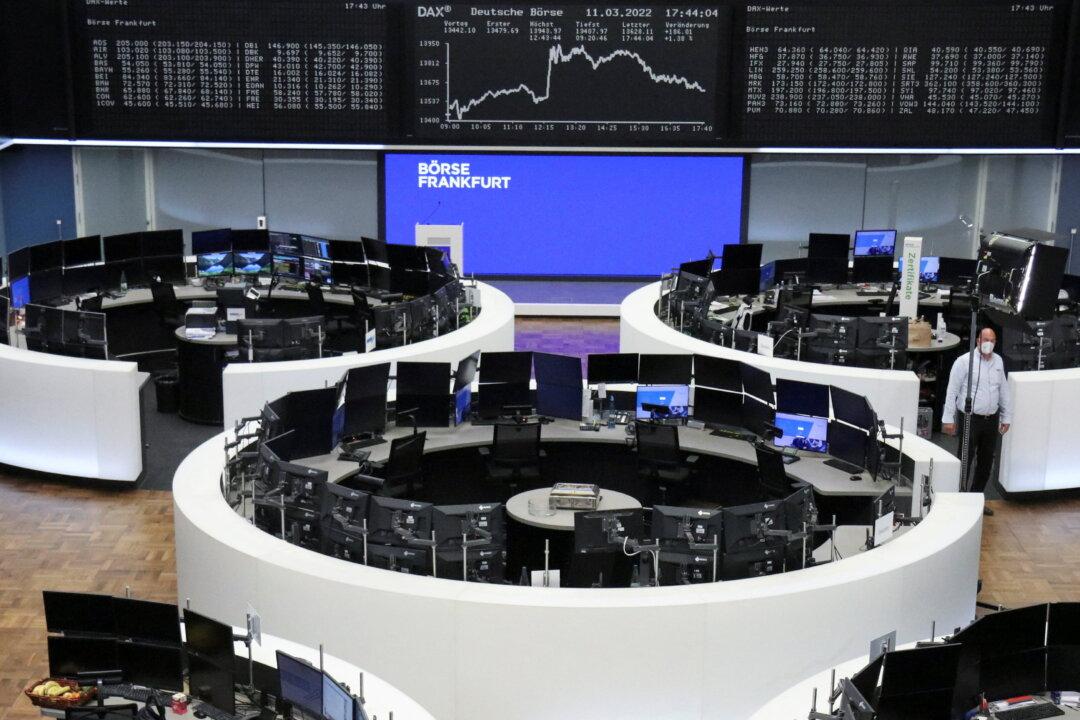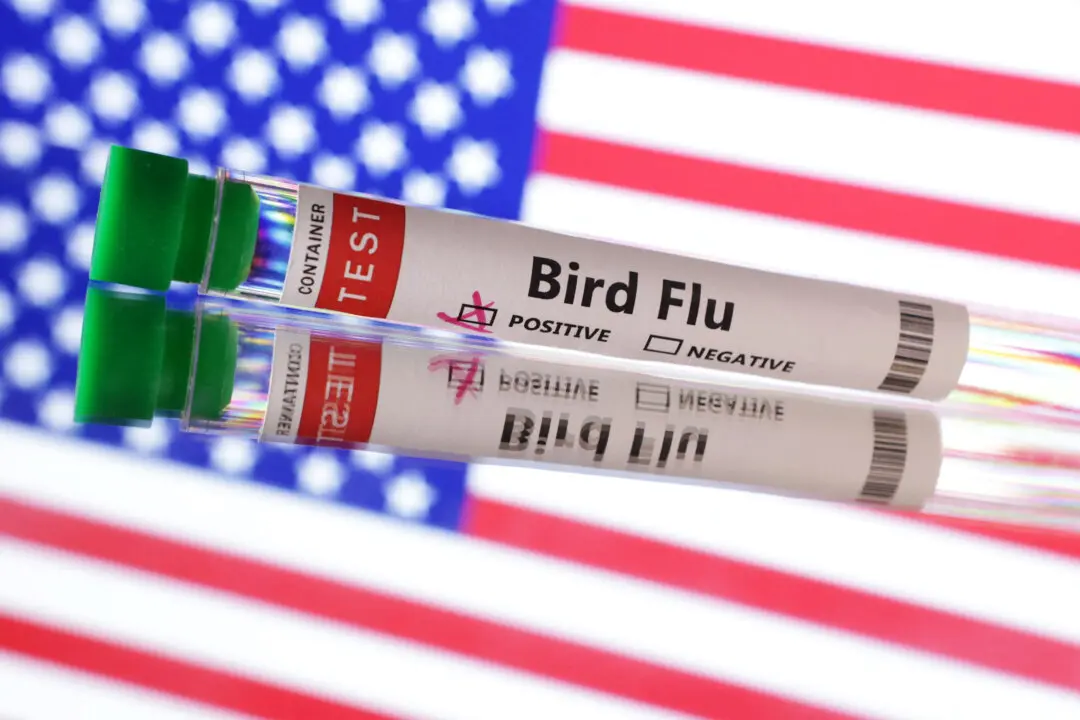LONDON—Traders were back on Russia sanctions watch on Tuesday with oil, inflation-sensitive bond yields, and stocks all edging higher ahead of an expected new measures from the West in coming days.
Europe saw the STOXX 600 index nudge 0.3 percent higher as oil, industrial, tech, and insurance stocks all made ground, while the euro clawed back a sliver of the 1.8 percent it had lost against the dollar in recent days.





